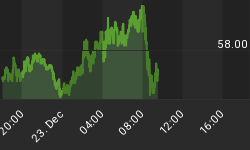The minutes of the September 7-8 meeting of the Bank of England's Monetary Policy Committee (MPC) revealed a unanimous decision to keep interest rates on hold, in the wake of the 5-4 split vote to cut by 25 basis points back in August. The nine members of the MPC apparently held an unusually short policy discussion this time around - no-one was even considering the need for another rate cut at this point. Sterling recovered some ground against the US$ on that news.
This unanimity reflects the mixed messages coming from the data: output may or may not slow further; consumers may or may not be feeling more comfortable; export demand from the Euro-zone may or may not recover soon; inflation expectations may or may not be stable. About the only clear message is that the housing market is heading for the hoped-for soft landing. All told, the BoE is on data watch, and so are the markets.
In its last round of economic forecasts back in August, the BoE concluded that inflation will hit the 2.0% target in two years, if rates remain at 4.50%. At the meeting two weeks ago MPC members noted that oil prices posed an upside risk to the inflation projection, but also noted that price expectations remain "well-anchored." So, no worries on the inflation front yet - headline consumer price inflation jumped to 2.3% in July and to 2.4% in August, but the MPC is focused on the outlook two years out, and that still looks stable.

Less certain is the outlook for output and for consumer sentiment and demand. Members noted that Q2 GDP growth had been revised upward, but remained slightly below its long-run average, and that data point to a similar level of growth in Q3. If consumer spending growth, business investment and the Euro-zone economy continued to be weak, then economic growth and inflation could be lower than projected in the August Inflation Report.

In other words, watch the data - in particular, indicators of domestic consumer spending, business investment, and inflation expectations, along with overall growth rates in the Euro-zone. If, as we expect, growth continues to undershoot the BoE's forecasts, and inflation expectations remain stable, there will be one more rate cut next spring. If growth slows even more sharply heading into Q4, look for a November easing.
This morning, the markets have decided that interest rates will probably be on hold until early next year, with one more rate cut coming in Q1 2006. But any unexpectedly weak piece of economic news will spark renewed expectations of a November rate cut. All told, sterling trade will remain choppy for the foreseeable future.















